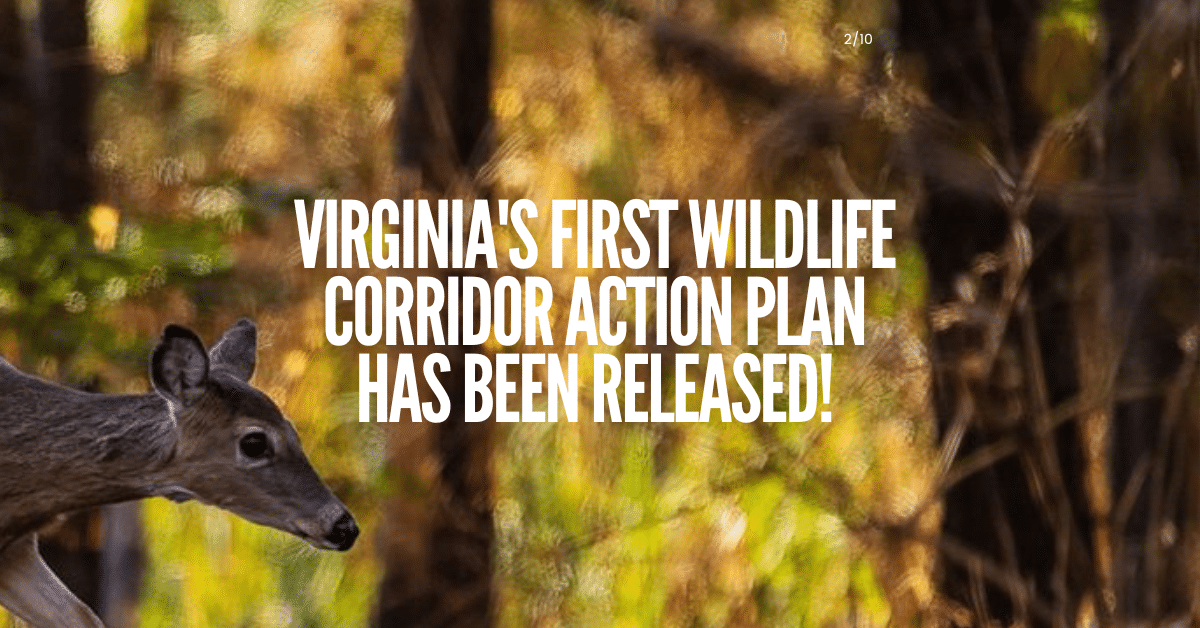
Virginia’s First Wildlife Corridor Action Plan Has Been Released!
What is in the Wildlife Corridor Action Plan (WCAP) and what happens next?
In 2020, Wild Virginia, along with other partners of the Virginia Safe Wildlife Corridors Collaborative, Senator David Marsden, and Delegate David Bulova, supported Senate Bill 1004/House Bill 1695 (§ 29.1-578 and § 29.1-579), which directed the creation of a Wildlife Corridor Action Plan.
The Virginia Department of Wildlife Resources notes some of the intent behind the plan:
- Intent #1: Identify wildlife habitat corridors comprised of high quality habitats for priority species and ecosystem health using the best available data;
- Intent #2: Identify existing or planned human barriers to wildlife movement along such corridors;
- Intent #3: Identify areas of high risk for wildlife-vehicle conflicts;
- Intent #4: Prioritize and recommend wildlife crossing projects intended to promote driver safety and wildlife habitat connectivity;
- Intent #5: Provide a public portal to host this Plan, data, and maps; and
- Intent #6: Update this Plan every four years.
The WCAP Framework
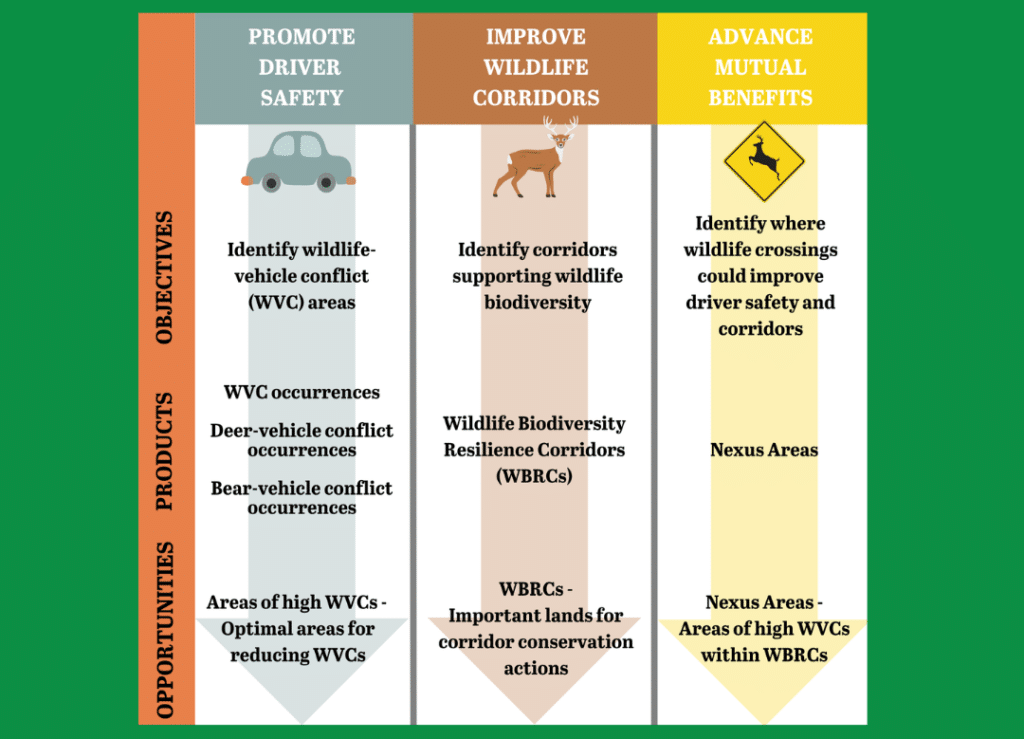
Identifying areas with high wildlife-vehicle conflict occurences
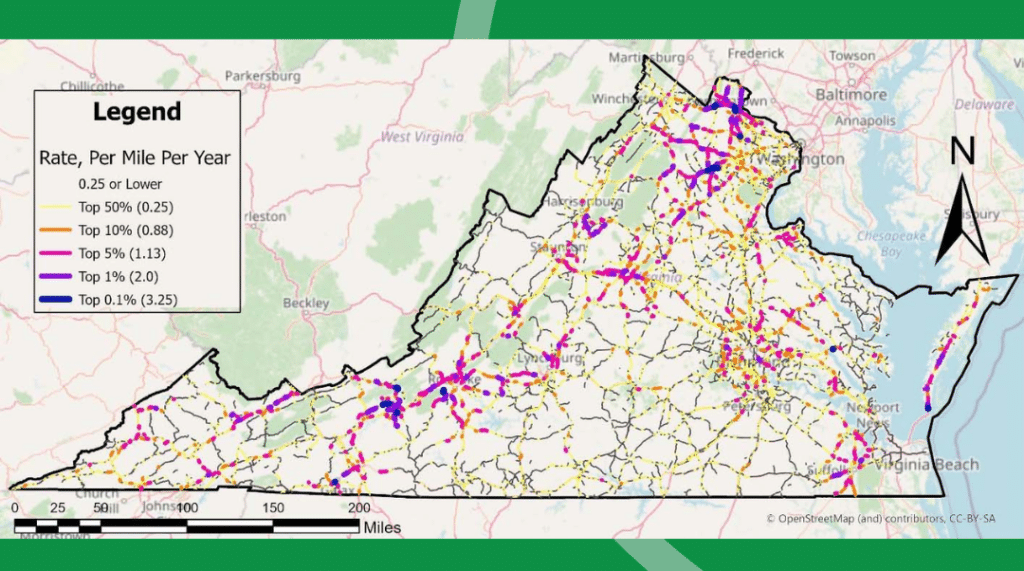
Identifying Wildlife Biodiversity resiliency corridors
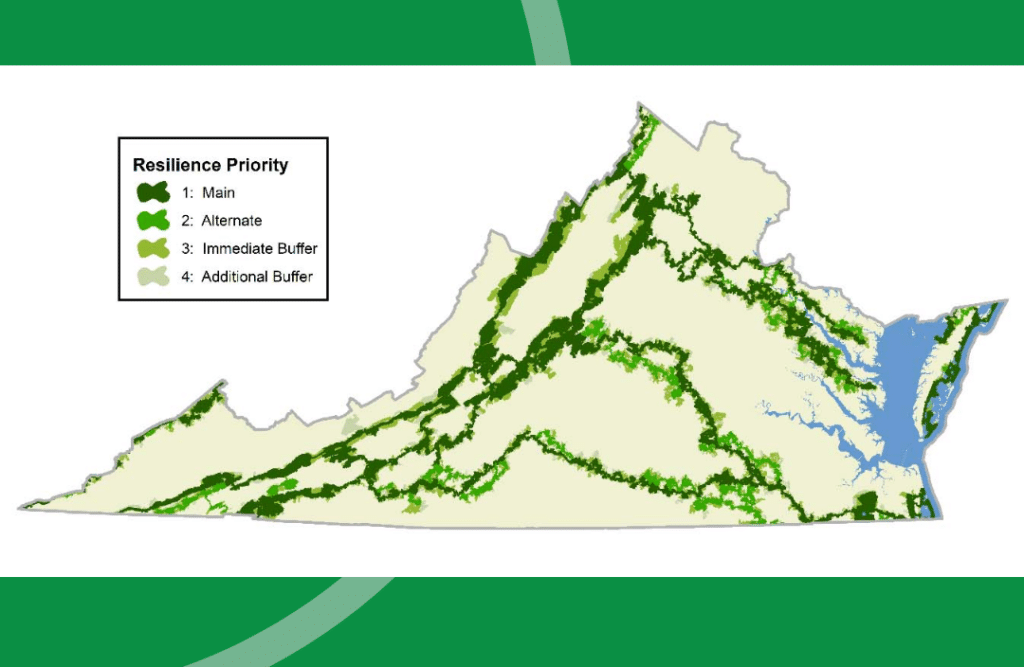
Identifying areas to advance mutual benefits (‘Nexus areas’)
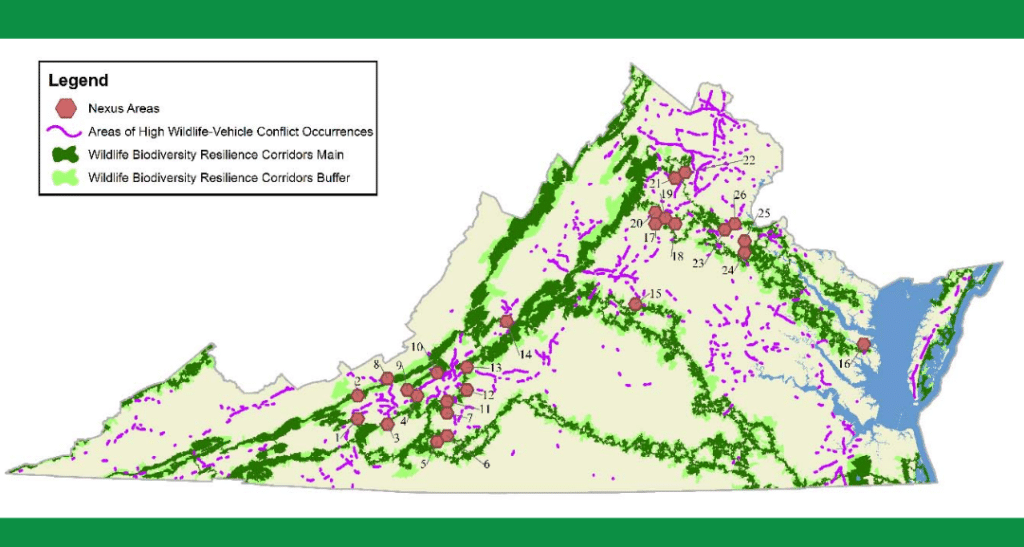
What do we do now?
Now the real work begins.
Wild Virginia will act as a resource for groups interested in initiating wildlife corridor protection efforts by providing technical assistance with information within the Wildlife Corridor Action Plan. You can read the full plan here.
Help us protect Virginia’s drivers and wildlife by making a donation and becoming a member today!
We are a driving force behind the multidisciplinary, multi-agency group called the Virginia Safe Wildlife Corridors Collaborative (VSWCC). This group works to reduce habitat fragmentation issues caused by Virginia roads and improve habitat connectivity. Learn more about our efforts here.